Rubber Bands and Braces

Why use rubber bands with braces? Some people have them, and some people don’t need to use them at all. Along with brackets, archwires, and ligatures, rubber bands are just another part of braces. Rubber bands are extremely helpful as they help move the teeth and jaw into proper alignment. They are connected to the actual bracket and help improve your bite. If your jaw is misaligned, read on to discover how rubber bands might be the option to straighten your teeth and jaw at the same time!
Parts of Braces
Modern technology has changed the lives, and smiles, of millions of patients worldwide who have used or currently use braces. Nowadays, braces can be as inconspicuous as we want, with some brackets being attached to the backs of teeth, rather than the front, for a more aesthetic appeal. With the invention of a variety of orthodontic appliances, such as lingual braces, Invisalign, clear braces, and traditional, the patient can decide what braces fits their oral health goals the best. Along with the many types of braces we learn about, there are also other parts of braces that we aren’t as familiar with, such as “bracket,” “archwire,” “springs,” and “ligatures.” We have heard of the different components of braces, but what does an archwire do? How do springs help adjust our teeth? Depending on your needs, your orthodontist will install any of these appliances to help you get the best smile in the shortest amount of time possible.
Brackets are the square part of the braces that are directly attached to the tooth, usually through a cement that bonds it to each individual tooth. They are usually made of steel or clear ceramic, and they guide the archwire into the appropriate placement. The archwire is held by brackets and is designed to guide the movement of the teeth during treatment. They are normally made from stainless steel, but also can be made with titanium. Springs go between brackets and around the archwire and are also made of stainless steel or titanium. They function as a force that opens or closes a space between teeth. The archwire and the bracket are connected through ligatures, which are the little rubber bands that wrap around each bracket to hold the archwire in place. For adolescents, these are usually the best part about braces because they come in a variety of colors that kids can choose from, and are changed after each orthodontic visit whenever the archwire is tightened. Although ligatures are rubber bands, they are not the same thing as interarch rubber bands, which have a major impact on jaw and bite alignment.
Rubber Bands
Interarch rubber bands, commonly known as “rubber bands” or “elastics,” ensure that your child’s teeth are lining up properly. They adjust bite and jaw position, such as an overbite or underbite, and are connected to the bracket with hooks. They create a force to move the teeth in a particular direction, specifically closer together. The top and bottom tooth bracket are connected through these bands, which adjusts the position of the teeth in the mouth and the position of the jaw. These rubber bands are removed during meals as well as while cleaning your teeth and brackets. Usually, they are replaced daily because of the wear they endure and their likelihood of breaking if used for too long. When worn to adjust a misaligned bite, interarch rubber bands are typically worn at all times, except for when eating or cleaning your teeth. If the treatment is only minor, you might only have to wear the bands at night. The consistent tension on the teeth and jaw is what makes these bands effective. If a patient doesn’t wear their bands in the prescribed manner, whether it be the length of time is too short or you’re wearing more bands than normal, this can lengthen treatment time and move your teeth in an unintended way. Not every patient will have to use interarch rubber bands, but if your orthodontic prescribes you to wear them, make sure that you follow his or her directions exactly and take good care of your bands.
Do’s and Don’ts of Braces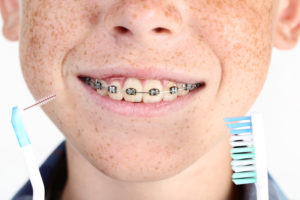
While braces have revolutionized the dental and orthodontic professions, there are some rules that a patient needs to follow to protect and get the most use out of their orthodontic appliances. Always make sure to keep your teeth clean when wearing braces. Brushing and flossing under the archwire and between the brackets is essential to remove plaque, which can easily build up on your teeth with braces. To make sure that your teeth are being cleaned entirely, replace your toothbrush every three months or as soon as the bristles are frayed. Go to all of your orthodontic appointments so that they can adjust your archwire and monitor your teeth’s movement. If you delay your adjustments, your treatment time can be increased, which can be expensive.
Even though braces are strong, you can still break a bracket or an archwire with the things that you eat. Avoid foods that can get stuck in your teeth or your braces, such as nuts, popcorn, hard candy, ice, and sticky foods like chewing gum or caramel. Try not to eat as much sugary foods as it can lead to tooth decay around the brackets, which can permanently damage your teeth. Especially for active teenagers and adults, use a mouthguard during physical activity or when playing a sport to protect your mouth and jaw from getting hurt. Following this list of do’s and don’ts will increase the likelihood of having a positive and shorter experience with braces.
Getting The Smile You Deserve
For other tips and suggestions about orthodontic appliances and which one is best for you, call Belmar Orthodontics at (303) 225-9016 for a comprehensive exam. With our team of qualified and dedicated individuals, we will provide you or your child with the best orthodontic care for a great price. Call now to learn more!
Braces: How Are They Made?

You may wonder what the differences are between metal, ceramic, and lingual braces and how they compare to Invisalign treatment. All are a bit different and they are both made and worn differently. Braces are made from various materials and designed specifically for your mouth.
Metal Braces and Your Teeth
You’ve likely seen someone wearing metal braces and you know that they make your teeth straighter. But how? It takes a bit of science and the right orthodontic appliance to make that beautiful smile happen. With the most common type of braces—metal braces—you have a stainless steel material that is shaped into specific orthodontic parts that will all go together in your mouth. Often those parts are molded and shaped in a special lab that then ships those parts to orthodontists.
Labs will even do custom-made brackets and wires for patients when the need arises. However, most braces have a specific design like metal braces do. Metal braces have several parts that include:
- Brackets: These stainless steel pieces are those little squares bonded to the middle of each tooth. We use a special bonding glue that will stay on your teeth for the entire duration of your treatment, but will come off easily with the right orthodontic material. Your brackets are small anchors that hold a wire in place. They will have tiny rubber elastics placed around them to protect your teeth and prevent stuck food.
- Archwire: This metal wire will pass through the brackets on each tooth, all the way to the back of your mouth. Many patients have a bracket that wraps around the back molar that stabilizes this archwire. The wire will follow the curve of your jaws in an elongated have circle. When a thicker archwire is placed or when this archwire is adjusted, it can help move the teeth into place because of the force placed on the brackets.
- Ligature Elastics: These are the rubber elastics we mentioned. The elastics are what keep the archwire sturdy so it can straighten your teeth.
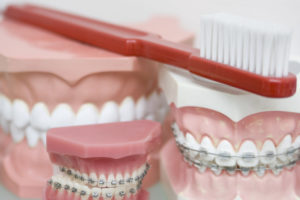
How Teeth Straighten
Your archwire will be adjusted very slightly at your orthodontic appointments every 4-6 weeks. That slight adjustment may seem very small, but it’s what your mouth needs to make a true, straightening change. The appliance is not the only thing changing your teeth into a straighter position. Your teeth are the hardest substance in the body and can even be harder than many metals. Straightening them would seem very difficult, when it’s not. It simply takes time.
Your teeth can take a ton of force from chewing, biting, eating, talking and other actions because they are rooted into your jawbone. However, the jawbone is much weaker than the teeth are. So why doesn’t your jawbone get breaks in it when you chew hard things? You have something called the periodontic ligament that is around every tooth root as it goes into your jaw bone. All those ligaments are shock absorbers for your jaws when you chew, minimizing the force your jawbones take. These are key to straightening the teeth.
When orthodontic appliances are on the teeth, they will apply a very slight pressure to your teeth and to the periodontic ligaments that surround them. When that pressure is constantly there, your body will produce acids in the jawbone area that will break down tiny parts around the teeth. With new space created, the teeth can shift. Your body will naturally deposit more minerals in areas that have changed to strengthen the jawbone once more. Over time, your jaw is literally breaking itself down on a microscopic level and then rebuilding itself. That is why orthodontic treatment takes months. However, the result is worth it.
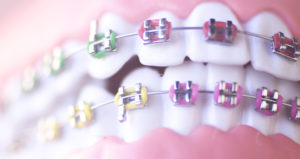
Ceramic and Lingual Braces
Ceramic and lingual braces are very similar to traditional metal braces, but are made a bit differently. Lingual braces are also a metal braces type, and most types are made from stainless steel in a lab. There can be other types of metal used or a combination of metals. These braces will have brackets and wires just like traditional metal braces, except that they will be placed on the back of a patient’s teeth.
Because of placement, children are not usually candidates for lingual braces because of the size of the teeth. Dental impressions of the back of the teeth are made so that metal coverings can be made for the tooth backs, which is a bit different than traditional metal braces. More anchoring is needed with lingual braces, and this is how it is done. The metal material will cover the entire tooth back with a bracket in the center of the tooth, and each is placed individually when a patient gets their appliance. The archwire works the same as other braces.
Ceramic braces are very similar to metal braces in their design and how they work. However, they are made from ceramic material, which is naturally white already. This makes the braces blend in with the teeth more, and the metal can even be frosted to blend in with whiter teeth.
Invisalign: Customized to the Patient
Invisalign treatment is an orthodontic option that is vastly different than your other options. The most noticeable difference is that there is no metal or ceramic material in your appliance. A patient will have digital images taken of their mouth. With that image, custom aligners are made that a patient will switch out each week. These are a type of plastic material patented by the Invisalign company. It’s a strong enough plastic to cause the same type of shifting you want your teeth to do. Aligners fit snug in the mouth as they are custom made, are switched out each week, and must be worn 20-22 hours of the day. If you are interested in any of these types of braces or want to see how the braces are put on a patient, call Belmar Orthodontics today at (303) 225-9016 with your questions!
Orthodontic Treatment as Restorative Dentistry

Did you know that getting your teeth straightened can be a form of restorative dentistry? This is because restorative dentistry seeks to restore or bring your smile to a more perfect state. Crooked teeth can become straight, which in turn starts to relieve the burdens of tooth decay, gum disease, bad breath and other oral health problems. If you want to restore your smile once more, see what our 4 different orthodontic options can do for you!
Why Is Your Smile Important?
Some patients don’t realize just how important a smile really is. Studies show that your smile is one of the first things another person will notice about you. Is that smile showing that you are healthy and confident? Or do you hide your smile because of crooked teeth, discoloration or other aspects you don’t like? When a smile looks good, studies show that people often feel more confident and they exude that confidence much easier. A better smile can lead a person to be more social and confident to pursue successful endeavors.
It’s not only what a smile does for a person themself that’s important. How your smile looks to others also will determine a lot about how successful you are. The makes of the orthodontic appliance Invisalign conducted a study about smiles, and what they found was quite amazing:
- 1/3rd of people notice a person’s smile before any other feature.
- Those who have a straighter, more beautiful smile are 45% more likely to get a job over a competitor with a crooked or discolored smile.
- Your smile can send messages about how healthy you are and how happy you seem. When that smile is straighter and more beautiful, others will see you as 21% more likely to be healthier and 47% happier.
- 73% of people are more likely to trust you at first glance if you have a better smile.
- You’re 58% more likely to be perceived as wealthy and 57% more likely to get a date if you have a great smile.

What Is Restorative Dentistry?
Your teeth will determine most of how good your oral health. When you eat, sugars in the food you eat mix with mouth bacteria. That creates plaque, or that sticky, acidic substance that coats your teeth. Over time, if proper oral hygiene habits aren’t observed, the teeth will change colors and decay. This happens much easier to the teeth if they are crooked. That’s because it’s harder to clean between the teeth if there is no way to get floss through crooked teeth.
Restorative dentistry seeks to restore smiles that are crooked or damaged through decay or gum disease (a disease to the gums that happens just like tooth decay). This form of dentistry consists of dental services such as teeth whitening, same-day crowns, root canal therapy and tooth-colored fillings. There are many dental patients that will get dental veneers—also known as “porcelain veneers”—to restore their smile. This is a dental service where the top layer of your teeth is taken off and replaced with a perfect, white tooth shell. However, once that part of your natural tooth is taken off, you can’t get that natural part back. Porcelain veneers do make your smile look beautiful, but they don’t change your crooked teeth or oral health issues underneath.
Fixing the Problem with Orthodontic Treatment
Fixing the problem permanently is a great solution to getting a beautiful smile and reducing your problems with tooth decay, gum disease, bad breath and more. Straighter smiles are ones that are easier to clean and ones that look attractive and healthy. Plus, once you straighten your smile with orthodontic treatment, it can stay that way for life. Orthodontics is different than dentistry, but is absolutely important to your oral health.
Dentists will fix problems with tooth decay and gum disease. Orthodontic treatment and restorative dentistry through those braces can help prevent problems in the first place. Plus, orthodontic braces are able to correct bite and alignment issues that are caused by misaligned bites and jaws. Those issues can cause speech and development problems without intervention. Without orthodontic treatment, other restorative dentistry methods can only do so much.
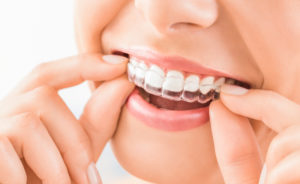
Restorative Dentistry for You
Our easiest method of restorative dentistry for teens and adults is through Invisalign treatment. This option works just as well as our lingual braces, ceramic braces and traditional metal braces. However, with Invisalign, the focus is on aesthetics as well as straightening. We want you to have a beautiful smile as you straighten, and Invisalign is a great way to achieve that.
Invisalign is a orthodontic treatment that is designed to be virtually unnoticeable on your teeth. Patients have their teeth digitally scanned in-office and a treatment plan is made for them, mapping out how orthodontic treatment will transform their smile in 18 months or less. Often, patients can straighten their smile in 1/3rd of that time, depending on the condition of the teeth, bite and alignment. Less office visits are typically needed for this type of restorative dentistry.
You simply wear your aligners for 20-22 hours each day (and overnight), and by switching out the aligners each week, your teeth shift into a straight smile over time. The benefit of this restorative dentistry option is that you are actually fixing the root cause of oral health problems. Crooked teeth cause tooth decay and gum disease to worsen, but you avoid that with a straight smile. With other restorative dentistry options (such as teeth whitening or veneers), you will still have the crooked teeth (although masked), and possibly the dental problems. Avoid all that while still getting a beautiful smile with Invisalign. If you want to learn more about this restorative dentistry option for adults and teens, contact Belmar Orthodontics today at (303) 225-9016!
Fun Facts About Orthodontics
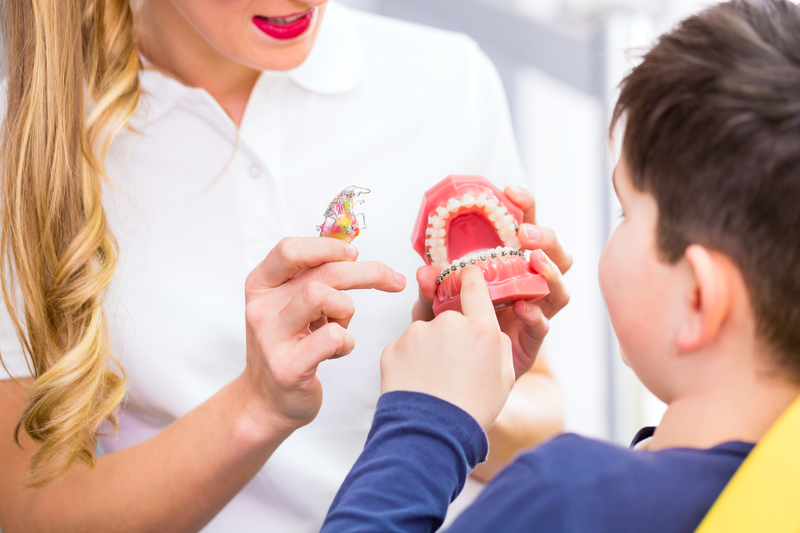
Did you know that an orthodontist is different than a dentist? Orthodontics is a dental specialty all its own, that has different goals and processes than what dentists do. There are many ways to fix the teeth and many methods that have been tried for many centuries. Find out the amazing history of orthodontics and some facts you may not know!
History of Orthodontics
People have been straightening their teeth since the time of the Ancient Egyptians, as can be seen from mummies from this era. Even the Romans and Etruscans used crude orthodontic straightening methods to get a better smile. Many philosophers hypothesized better ways to straighten the teeth. A Roman writer Celsus (1 A.D.) thought the teeth could be pushed into place. Pliny—around the same time—thought the teeth could be filed to be the ideal shape and size.
It wasn’t until 1728 that Pierre Fauchard—or the “Father of Dentistry”—made great strides with orthodontics. He first practiced crudely removing the teeth, replacing them straight, and tying them to other teeth so they could heal straighter. From his influence and others after him, modern orthodontics came to be. Matthaeus Gottfried Purmann developed dental impressions in the 17th century. In the early U.S. years, barbers and medical professionals experimented and performing small orthodontic treatments. This was until the first dental school was established in 1828.
Afterwards, J.S. Gunnell invented a form of headgear that was successful in straightening the teeth. Dental students and professionals figured out how to make a metal appliance to straighten individual teeth, which led to the now-used bracket and wire design in modern orthodontics. Before 1970, orthodontists wrapped wires around each tooth and required that headgear to straighten. This practice involved lots of metal in the mouth, which is why a better form (that we use today) was invented in the following years. Now, in the last 20 years lingual braces (braces behind the teeth) and Invisalign (transparent aligners) were invented to allow patients a hidden apparatus with orthodontics.
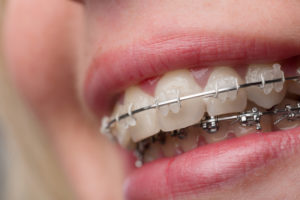
What Do Orthodontists Do?
Did you know that orthodontists are dentists? Every orthodontist is a dentist because they have completed dental school and then some. However, not all dentists are orthodontists. The standard requirements for dentists are to complete 4 years of undergraduate schooling and then 4 years at a dental school. They will have to pass exams and become certified to do dental work. Orthodontists do all of those 8 years, plus they complete 2-3 more years of orthodontics, training in bite and alignment correction and surgical orthodontics. All throughout their career, both dentists and orthodontists must do continuing education courses as well as pass tests to continue working.
An orthodontist will not fix your cavity even though they may spot the signs of tooth decay. Often, an orthodontist works closely with a dentist, as both professionals work on your mouth. What one professional doesn’t do, the other will do. Dentists do everything relating to tooth decay (cavities), gum disease and other oral health diseases as well as remedying dental emergencies. An orthodontist performs services that a dentist doesn’t do such as:
- Bite and alignment correction in children and adults (child orthodontics and adult orthodontics)
- Surgical orthodontics, which is surgery to help remedy a misaligned jaw or bite.
- Braces design, fitting, adjusting and complete process with lingual braces, ceramic (clear) braces, traditional metal, and Invisalign treatment.
- Training in placing temporary anchorage devices, which are tiny screws in the mouth that push, pull, lift or intrude teeth that are being straightened.
- Designing and creating retainer devices to keep bite, alignment and teeth in proper position.
Facts About Braces
- An orthodontist must complete 4 years of dental school, plus 3700 hours or specialized training in orthodontics to get their degree.
- There are more than 19,000 orthodontist members under the American Association of Orthodontics in the U.S., Canada and abroad.
- 1 in 4 people with braces are adults.
- Children make up another 1/4th of people wearing braces to correct bite and alignment.
- Because of modern technology, all four of your dental options (lingual, metal, ceramic and Invisalign) can straighten your teeth in about the same amount of time.
- It is possible to only get braces in either your upper or lower jaw if the other jaw is straight.
- The jaws stop growing as a child ages. That growth stops towards the end of the teenage years around 17 or 18. Straightening the teeth is effective for people after this age, but it may take longer than it would for children.
- Patients generally see their orthodontist every 6-10 weeks for braces adjustments. Patients with severe bite and alignment issues may need to come in more often.
- Orthodontists often usually have “DDS” or “DMD” after their names. This stands for “Doctor of Dental Surgery” and “Doctor of Dental Medicine”. Both are considered equal degrees, but the degree given depends on the dental school attended before orthodontic training.
- Materials used in metal braces are so light that they won’t set off metal detectors in airports.
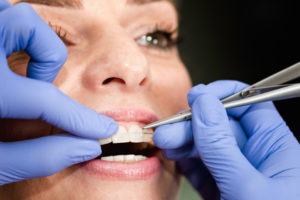
How Do Orthodontics Help People?
If you’ve never been to an orthodontist, you may wonder why you need one. Not everyone may need orthodontics to correct bite and alignment issues, but everyone should see an orthodontist at some point. The American Association of Orthodontics recommends that every person have an orthodontic visit between ages 7 and 8. This is prime time to detect bite and alignment issues that would lead to crooked teeth, speech impediments, oral hygiene diseases, and problems chewing, biting and functioning normally.
When issues are found, they can quickly be corrected so children can grow and develop normally. If a teen or adult wants to straighten their teeth to boost their confidence and success, they can receive braces starting around age 11. For specific questions about our orthodontic services, call Belmar Orthodontics today at (303 225-9016!
Orthodontic Treatment Before the Year 2000
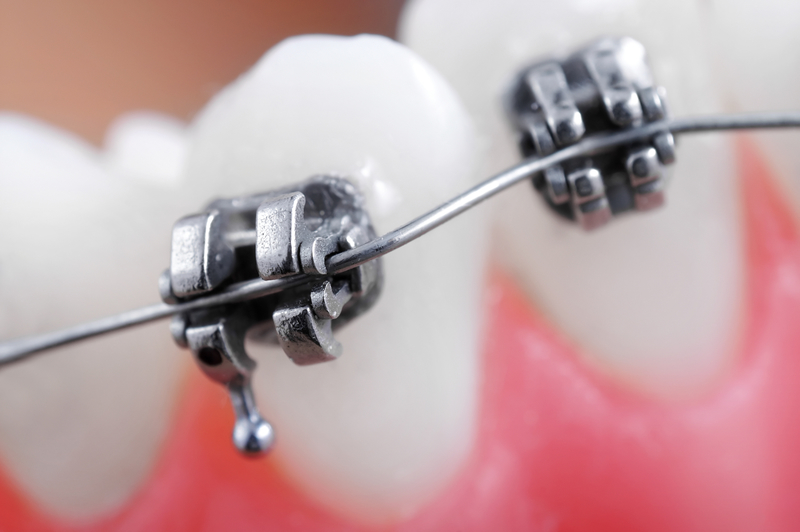
It’s the year 2018 and a lot has changed in every field of medicine since the year 2000. Orthodontics is no exception, and there are always new advances in how your teeth are straightened and cared for. There are many braces options available to patients that were not available in years past. However, some services—such as Invisalign—have been around longer than you might think. Find out when different orthodontic practices and services were available to patients and how orthodontic treatment looked before the year 2000.
How Old Is Orthodontic Treatment?
Many people think that orthodontic treatment is fairly new. However, people have been straightening their teeth for many centuries. Their methods were simply much cruder than the braces and orthodontic appliances you know today. Many mummies from Ancient Egypt have been found wearing orthodontic appliances to straighten their teeth. Ancient Greeks, Romans and the Etruscans have also been found with various types of “braces” and other mouth appliances.
To give you an idea of how long orthodontic treatment has been around, writings by Hippocrates (a Greek physician) have been found about the subject from 400 b.c. Even back then people were concerned about crooked teeth and how they looked. However, there weren’t very good methods for straightening the teeth, so there weren’t many advances in orthodontics until just a few centuries and decades ago.

Past Orthodontic Methods
People centuries ago did not have the best methods for straightening teeth. However, over the centuries, many people made advances or tried various methods such as the following:
- Ancient Egyptians used metal parts and wires to try to straighten the teeth, as has been seen on mummies.
- Celsus, a Roman writer from around 1 A.D., wrote about trying to straighten your teeth by pushing them into place.
- Several years later, a Roman named Pliny recommended filing your teeth down if you wanted them a certain size.
- Pierre Fauchard was born in 1728, and through his various methods and research in straightening teeth, is now considered the “Father of Dentistry”. One of the methods he tried on patients was forcefully pulling and moving the teeth into place with forceps. He would then tie those moved teeth to others so they could heal back into the mouth again.
- Dental impressions began in the 17th century by Matthaeus Gottfried Purmann. Impressions make models of the teeth, and this method was so successful that impressions are still used today.
- In the United States, barbers and medical doctors often pulled infected teeth and performed orthodontic treatment. The treatment varied from person to person and generally involved pulling teeth without numbing medicine.
- J.S. Gunnell invented a form of headgear in 1822 that was successful in straightening the teeth. However, that headgear was large and fastened to the jaw outside the mouth and pushed on the teeth.
- Before 1970, professionals in orthodontics wrapped wires around each tooth, anchoring them with a bracket on each tooth. This method required a lot of metal in the mouth.

Modern Braces and Appliances
Modern orthodontic treatment is very straightforward and easy. Orthodontics has advanced so much that people can even straighten their teeth without any visible signs that they are doing so. When you think of braces, you probably think of the metal brackets and wires that so many wear. Traditional metal braces consist of a metal bracket attached to each tooth with a metal wire going through the bracket. This orthodontic treatment method mimics past metal treatments that were done throughout the centuries. However, the brackets and wires take up minimal space in the mouth and gently straighten the teeth.
Ceramic braces are another modern option for patients that are most similar to metal braces. They involve the same look and design, except they are made from white, ceramic material. Even the archwire can be made white for a patient. Lingual braces also use a metal bracket and wire design, except that they are attached to the back of a patient’s teeth. These were created in 1976 and provided patients with a way to straighten their teeth without visible brackets on their teeth.
Invisalign is the most incognito way to straighten your teeth. Created in 1997, this orthodontic treatment consists of transparent aligners that are switched out each week. A patient will wear the aligners 20-22 hours a day with the freedom to remove them for eating, drinking, sports, playing instruments and more. In about the same time as traditional metal braces (sometimes less), patients can get straight teeth. This is an amazing option, as any teen or adult can straighten their teeth without others knowing.
Orthodontic Treatment Today
Many advances in dentistry happened around 1970 and later. This is when the design of metal braces was perfected to what we know it to be now. The future will surely hold many more advances in orthodontic treatment as the years go by. No matter what type of appliance is available or what you choose to have, we recommend straightening your teeth. Not only can it significantly reduce your risk for tooth decay and gum disease, but straighter teeth can raise your confidence and help you be more successful. To have your free braces consultation, call Belmar Orthodontics today at (303) 225-9016!
Orthodontic Technology: Great Innovations of our Time
There never was a better time for orthodontics and orthodontic technology. We are living in a century of amazing innovations and advances. This truly is a New Age of Braces. Treatment today is quicker, more precise, more efficient, more convenient, and more patient-friendly. Watch your smile transform before your eyes, but decide if you want anyone else to see the apparatus behind it all! Invisalign, Incognito, and Clear Ceramic Braces are today’s braces of choice! Learn what treatment option is best for you.
Dedicated to the Best Orthodontic Technology of Today
Belmar Orthodontics invests in your current and long-term health with the best orthodontic technology out there. Here are just a few of the amazing products that we provide:
Invisalign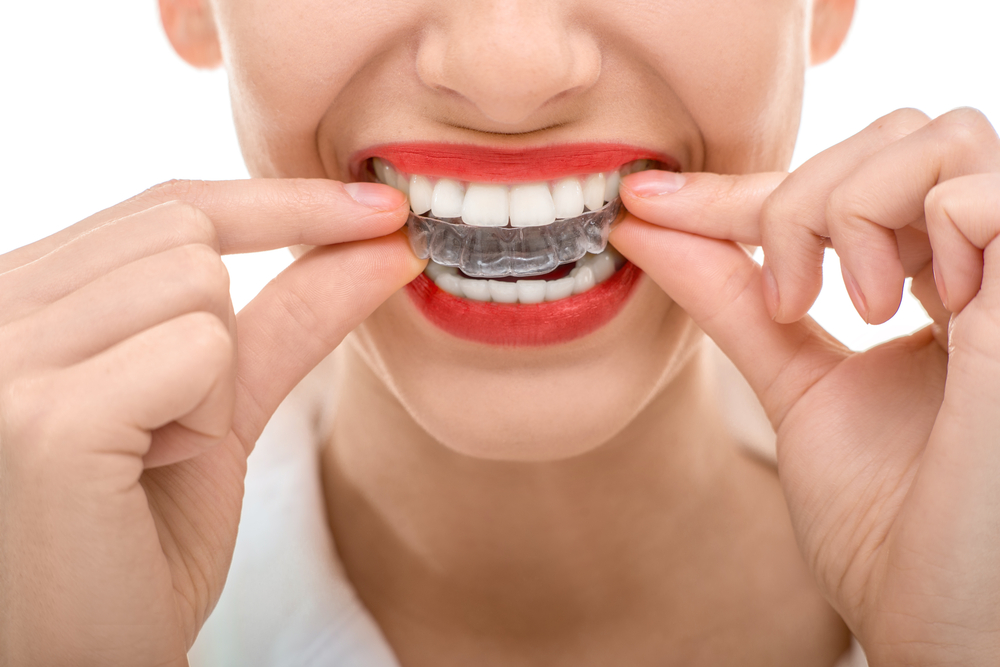
Invisalign® clear, removable aligners straighten your smile–invisibly. Hesitating to have orthodontic treatment because you don’t want to deal with metal brackets and wires in your mouth? Invisalign gives you a metal-free option. Gradually move your teeth into their proper position, or correct malocclusion (bites that don’t close correctly), without the discomfort and presence of metal braces.
Invisalign Teen™
For some teenagers, the process of straightening their teeth with traditional metal braces can make eating, speaking, and maintaining clean teeth challenging which is why Invisalign Teen has become the choice of so many.
 Incognito™
Incognito™
With Incognito™Lingual Braces, with 3M technology, you can achieve the same results as traditional braces with a hidden treatment apparatus on the tongue-side of your teeth. Lingual braces can achieve the same results as traditional orthodontics in a manner that is inconspicuous and undetectable. By discreetly attaching the braces to the back of the teeth, we can help you achieve healthy, straight, beautiful-looking teeth. With lingual braces, you don’t have to choose between having the orthodontic treatment you need or putting it off due to aesthetic concerns.
Temporary Anchorage Devices
Temporary Anchorage Devices, also known as TADs, are used in some orthodontic cases to help shift the teeth into a straighter position when braces can’t do it on their own, resulting in much more efficient treatment. Combined with braces, the titanium mini-screws (sometimes called mini-implants, and micro-implants) provide a fixed object that can be used to push, pull, lift, or intrude teeth that are being straightened.
 Clear Braces
Clear Braces
Clear braces function similarly to traditional metal brackets but they use ceramic brackets that are made to match the color of your teeth. Matching the bracket system to your teeth offers a cosmetic benefit to your treatment that many of our patients appreciate. Ceramic brackets used in the treatment are also also more resistant to staining, helping to protect your smile and keep it looking its best during treatment.
 High-Tech Alloy Wires
High-Tech Alloy Wires
NASA developed one of the 20th century’s most dramatic orthodontic innovations: heat-activated nickel-titanium alloy wires. They found that at room temperature, these heat-activated nickel-titanium arch wires become very flexible. Gradually, as they adjust to your body’s temperature, they become active and steadily move the teeth into the desired position. The high-tech properties of these innovative wires help them retain their tooth-moving capabilities longer than ordinary metal wires. This translates into reduced treatment times and less visits to the orthodontist.
Digital X-Rays
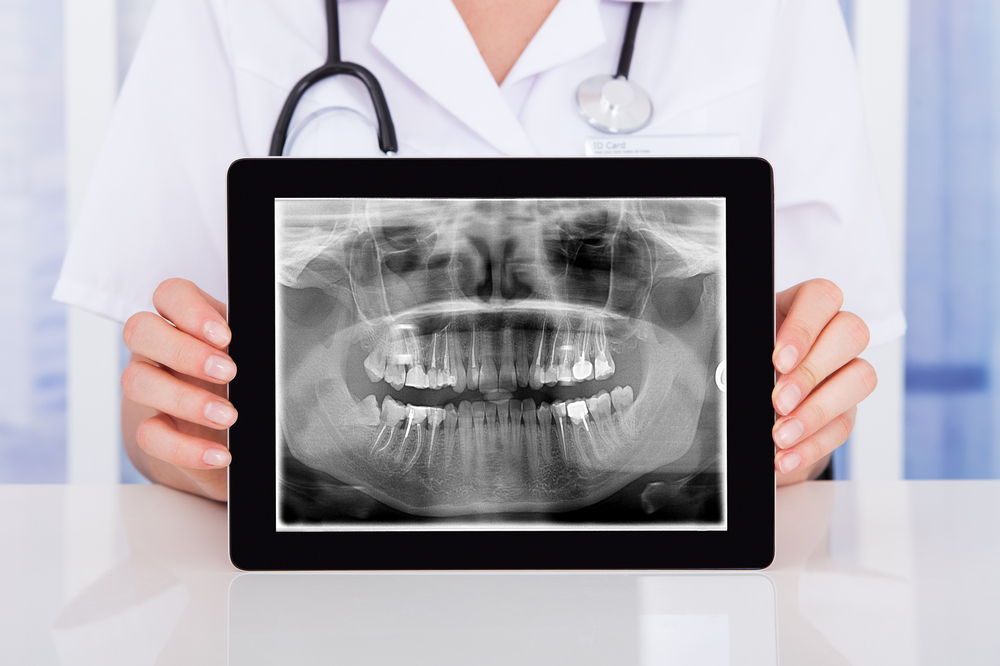
Digital 3D Impressions
Digital 3D impressions with Planmeca PlanScan® intraoral scanner enables us to forego traditional, messy impressions to create your orthodontic products with ease and precision. Digital impressions give us a more complete view of your teeth and mouth. This allows us to make treatment more comfortable, more precise and more immediate.
Cone Beam Computed Tomography (3-D imaging)
Planmeca ProMax 3D Max technology is the first of its kind! It brings together a Cone Beam Computed Tomography (CBCT) image, a 3D facial photo, AND a 3D model scan combining them into one image. The result is a virtual 3D patient–a near perfect tool for diagnostic success. Dental Cone Beam Computed Tomography is a high-tech x-ray option that is used when regular x-rays just don’t provide enough data. CBCT creates three dimensional scans of your teeth, soft tissues, nerve pathways and bones so we get the full picture. Planmeca ProMax 3D units offer a unique, Planmeca Ultra Low Dose imaging protocol, enabling CBCT imaging with an even lower effective patient dose than standard 2D panoramic imaging.
Clear Retainers
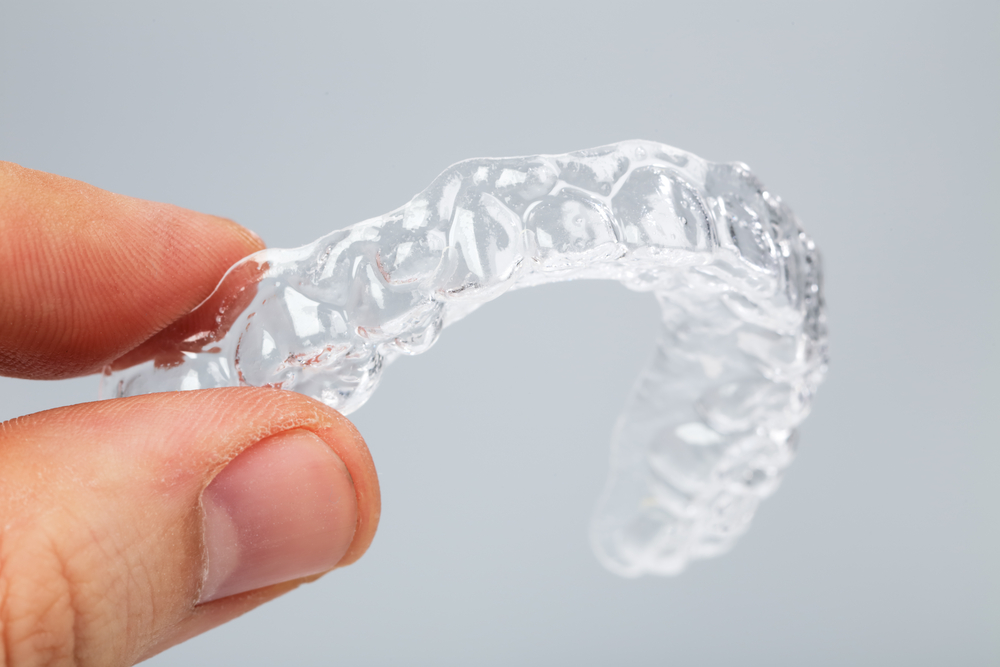 After you have obtained your beautiful smile with orthodontic treatment at Belmar Orthodontics, you need to commit to using your retainer to preserve your smile and avoid relapse. Retainers have come a long way from where they were just a decade ago. We offer both Hawley and Essix retainers for your post-treatment needs. Essix retainers are removable retainers that are made entirely of transparent plastic–which makes them much less noticeable than traditional wire retainers. Essix retainers promote good dental hygiene. They give you the freedom to remove the retainer when you brush and floss. Unlike some wire retainers, Essix retainers cover the entire arch of the teeth. But like the traditional Hawley, each one is uniquely molded to the shape of the patient’s mouth.
After you have obtained your beautiful smile with orthodontic treatment at Belmar Orthodontics, you need to commit to using your retainer to preserve your smile and avoid relapse. Retainers have come a long way from where they were just a decade ago. We offer both Hawley and Essix retainers for your post-treatment needs. Essix retainers are removable retainers that are made entirely of transparent plastic–which makes them much less noticeable than traditional wire retainers. Essix retainers promote good dental hygiene. They give you the freedom to remove the retainer when you brush and floss. Unlike some wire retainers, Essix retainers cover the entire arch of the teeth. But like the traditional Hawley, each one is uniquely molded to the shape of the patient’s mouth.
Call for an Orthodontic Treatment Consultation
If you are considering braces, but aren’t sure which method to use, call for a consultation today. We can evaluate your need for orthodontics as well as discuss your options for orthodontics today. Belmar Orthodontics is dedicated to helping you obtain a healthy, functional, attractive smiles. Think you need braces? Our online patient education can help answer any questions you may have, and our friendly staff is always available to help. Call 303.225.9016 today to learn more about braces or to schedule an appointment. Dr. Hardy is committed to your care and will help you reach your smile goals as quickly and efficiently as possible.
Advances in Orthodontic Technology and Treatments
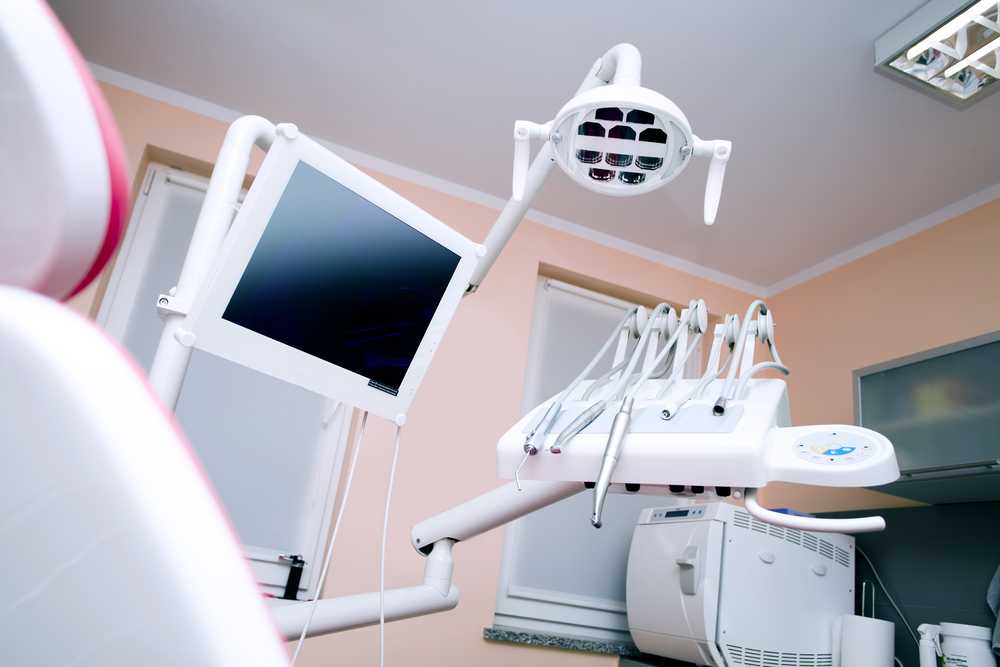
 Invisalign: Orthodontic Technology that Transformed the Industry Standard
Invisalign: Orthodontic Technology that Transformed the Industry Standard
When Invisalign® was released as a treatment option, it accomplished something truly extraordinary in the field of orthodontics–an invisible, removable design. As an Invisalign® patient you wear a series of clear, removable orthodontic aligners that are adjusted as the teeth shift into place without metal or wires. Patients love that the aligners are clear and not easily noticed by others. They also require less trips to your orthodontist for adjustments and make cleaning your teeth easier than traditional braces during the treatment process.
Digital X-rays with Planmeca ProMax® 3D
Belmar Orthodontics strives to provide you with the best orthodontic technology currently available for your care and treatment. Improvements in technology save you time and can offer you better precision and better results. This is one of the reasons why we use digital x-ray technology over traditional x-ray methods. With Planmeca ProMax® 3D we can offer our patients three-dimensional imaging as well as panoramic views of their bite and teeth alignment. This technology not only helps when diagnosing your specific patient needs, it is also a tool that can help us create your perfect smile. Planmeca ProMax® 3D scans are extremely safe for our patients and incorporate Planmeca Ultra Low Dose™ imaging protocol, enabling imaging with an even lower effective patient dose than standard 2D panoramic imaging. The amount of information we are able to gather from you, coupled with an extremely low dose of radiation in comparison to traditional x-rays, makes this technology a win-win for our patients. Patients also appreciate the improved comfort and rapid image-gathering process that Planmeca ProMax® 3D offers.
TADs
Temporary Anchorage Devices, also known as TADs–or mini-screws, mini-implants, and micro-implants–are used in some orthodontic cases to help shift the teeth into a straighter position when braces can’t do it on their own, resulting in much more efficient treatment. Combined with braces, the titanium mini-screws provide a fixed object that can be used to push, pull, or lift teeth that are being straightened. Since TADs don’t move, Dr. Hardy can use them to move teeth in directions and amounts that previously were not possible.
Planmeca PlanScan®
Belmar Orthodontics offers our patients the amazing benefits of digital 3D impressions with Planmeca PlanScan® intraoral scanner. This high-tech orthodontic technology product enables us to forego traditional, messy impressions to create your orthodontic products with ease and precision. Digital impressions give Dr. Hardy a more complete view of your teeth and mouth allowing him to create products for you that are perfectly customized for your needs and that give you a more accurate fit. The process is more comfortable, and the results are immediate.
Clarity™ Advanced Ceramic Clear Braces from 3M Technologies

Lingual Braces

Schedule a Consultation to Learn More
The best way to find out how Belmar Orthodontics superior orthodontic technology can benefit you is to schedule an appointment for an in-office consultation. Dr. Hardy can talk with you about your goals and come up with an effective treatment plan to help you achieve them. Contact our office today at 303.225.9016. We are excited to meet you and help you reach your smile goals!
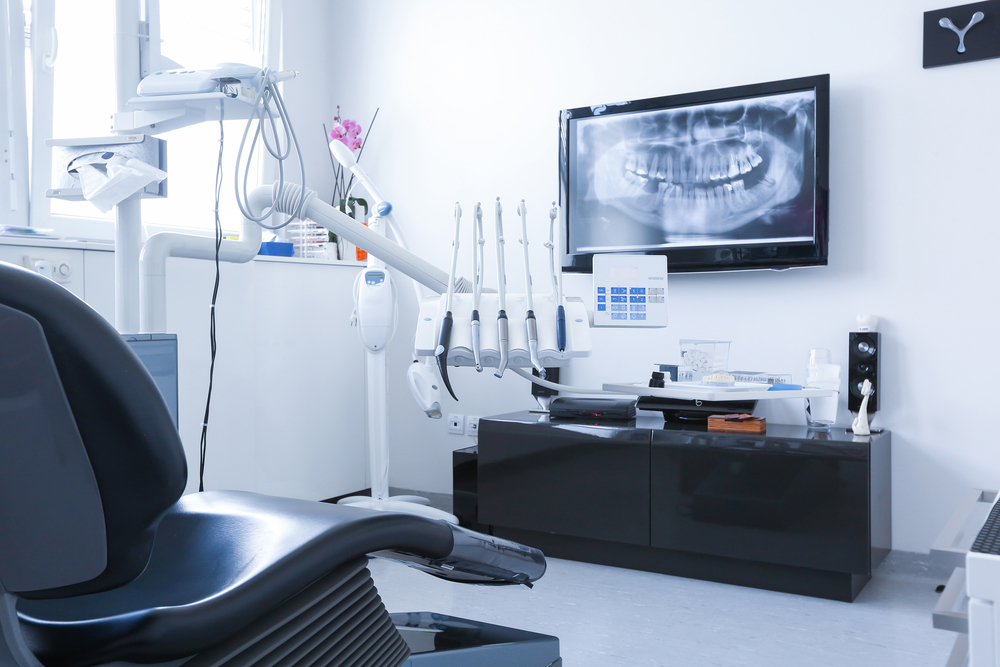
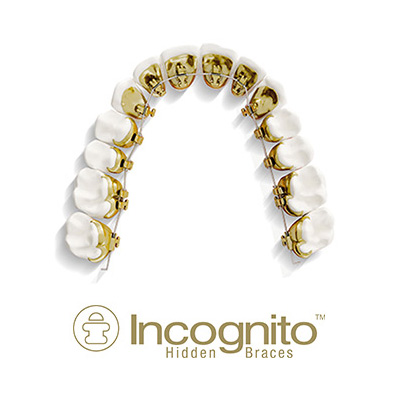
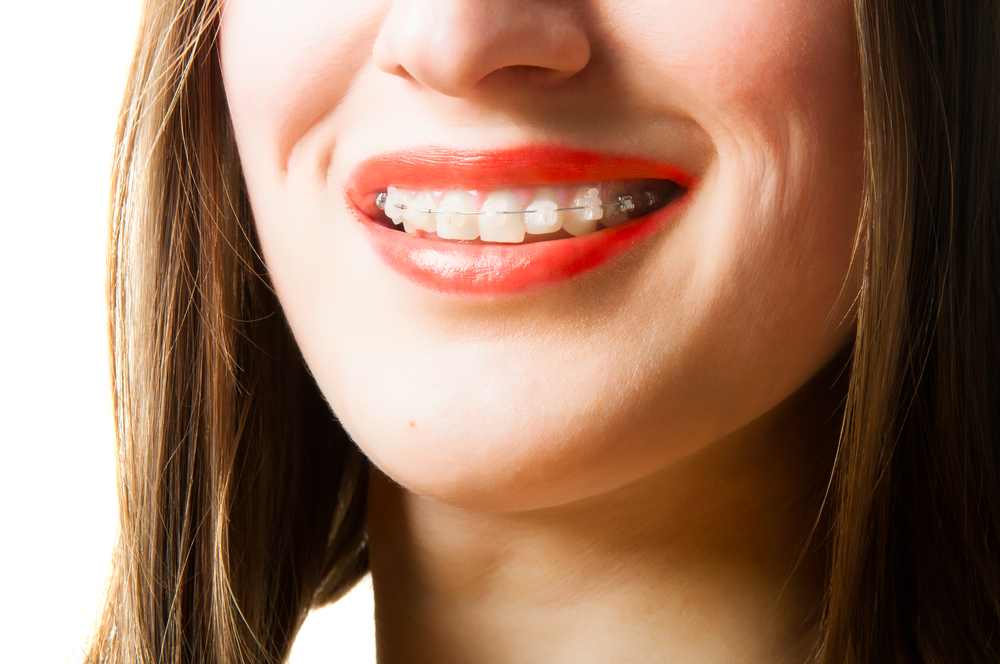 Clear Braces
Clear Braces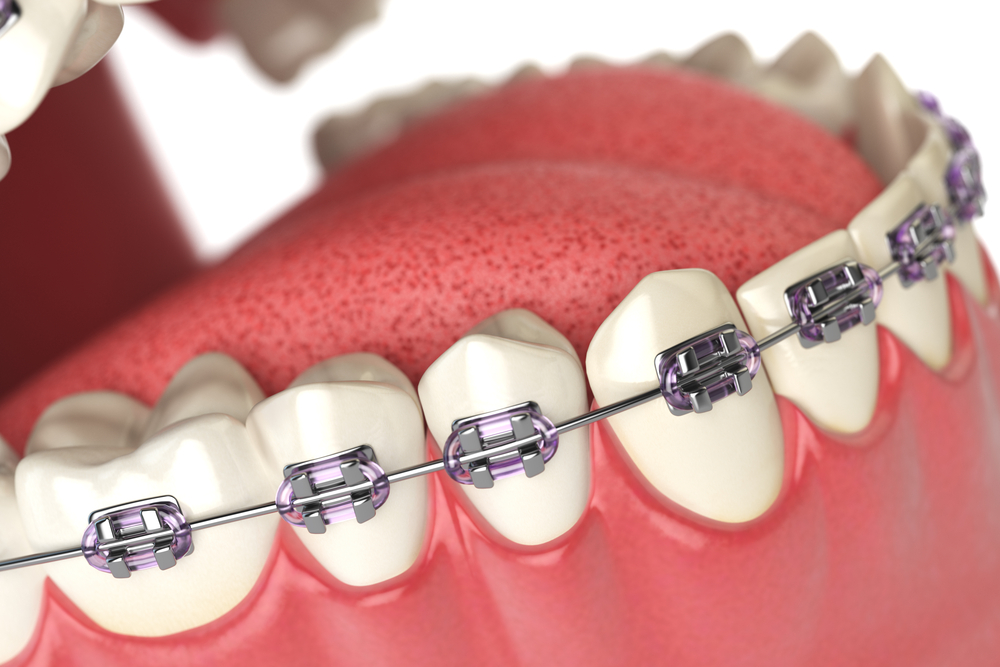 High-Tech Alloy Wires
High-Tech Alloy Wires
